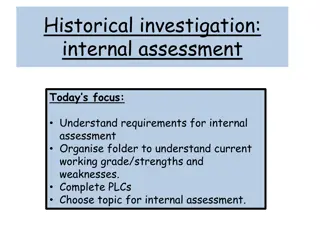
Advanced Applications of Differentiation in Mathematics
Explore the power rule for differentiation, slope of a curve at a point, marginal functions, average functions, and examples in economic contexts. Learn how to find marginal and average revenue functions, understanding the derivative of economic variables, and more in this comprehensive lecture notes.
Download Presentation

Please find below an Image/Link to download the presentation.
The content on the website is provided AS IS for your information and personal use only. It may not be sold, licensed, or shared on other websites without obtaining consent from the author. If you encounter any issues during the download, it is possible that the publisher has removed the file from their server.
You are allowed to download the files provided on this website for personal or commercial use, subject to the condition that they are used lawfully. All files are the property of their respective owners.
The content on the website is provided AS IS for your information and personal use only. It may not be sold, licensed, or shared on other websites without obtaining consent from the author.
E N D
Presentation Transcript
MTH412 Topic 5: Differentiation and Application Week 9 & 10: Lecture Notes 1
Differentiation Power Rule for Differentiation Example Differentiate the following: 2
Some important points to note before using the power rule Differentiation is with respect to the variable on the RHS of each equation. Always simplify the expression to be differentiated before starting Before using the power rule, write all ????? terms above the line, then state the value of n. For example Write root signs as indices; for example 3
The slope of a curve at a point Example Find the slope at ? = 15 for the following functions: 3. ? = 20 + ?2+5 1. ? = ?2+ 3? 2 2. ? ? = 2?3 17? ? 4. ? =?2 ?3 5. ? ? = 3?4 15?3+ 25? 300 ? 4
Marginal Function The derivative of a function was described as the equation for the rate of change of that function. For example, given the function,? = ?3, the equation ?? describes the rate of change in ? per unit increase in ?. The derivative of certain economic variables such as TR, TC, profit, etc. is called the marginal function: ??= 3?2 The marginal revenue is the rate of change in total revenue per unit increase in output, Q: Marginal Revenue: ?? =?(??) ?? The marginal cost is the rate of change in total cost per unit increase in output, Q. Marginal Cost: ?? =?(??) ?? To determine an expression for a marginal function the steps are as follows: Step 1: Determine an expression for the total function. Step 2: Differentiate the total function. 5
Average Functions The average function gives an expression for the average value of an economic variable throughout an interval. The average function is defined as: ??????? ???????? =????? ???????? ? Average revenue, AR, is defined as average revenue per unit for the first Q successive units sold. The AR is determined by dividing total revenue by the quantity sold, Q: ??????? ???????: ?? =????? ???????(??) ? Average cost: AC is total cost divided by the level of output produced, that is, ??????? ????: ?? =????? ????(??) ? 6
Example 1. Given a perfectly competitive firm's demand function, P = 20, find expressions for the marginal and average revenue functions. Solution To find expressions for average and marginal revenue, first write down the equation for total revenue: Note: The AR function is always equal to the demand function; however, for a perfectly competitive firm, the MR function is also equal to the demand function. That is, P = AR = MR = 20. 7
2. A monopolist is faced with a linear demand function P = 50 2Q. Find expressions for the marginal and average revenue functions. Hence calculate MR and AR for Q = 5 and 10. Solution For the monopolist whose demand function is P = 50 2Q ?? = ?? ?? = ?? ? ? = ?? A? = ?? ?? = ?? ? ? = ?? ?? = ?? ?? = ?? ? ?? = ?? ?? = ?? ?? = ?? ? ?? = ?? 8
Tutorial Questions 1. The demand function for a monopolist is Q = 120 3P. Find expressions for TR, MR and AR. Evaluate TR, MR and AR at Q = 15. 2. The demand function for a good is P = 125 Q1.5. Find expressions for TR, MR and AR. Evaluate TR, MR and AR at Q = 5. 3. A firm's fixed costs are 1000 and variable costs are given by 3Q. a) Write down the equation for TC. Calculate the value of TC when Q = 20. b) Write down the equation for MC. Calculate the value of MC when Q = 20. 4. A firm has the following average cost function: AC = 50 +10 a) Write down the equation for total cost. b) Write down the equation for marginal costs. ?. 5. A firm has an average cost function, ?? = ?2 9? +150 a) Find an expression for the TC function and calculate TC when Q = 15. b) Write down the equations for FC and TVC. c) Find an expression for the MC function. ?+ 75. 9
Optimization for Functions of One Variable Slope of a curve and turning points Optimization is mainly concerned with finding maximum and minimum points, also known as stationary points, on a curve. Applications include finding maximum and minimum values for functions such as profit, cost, utility and production. 10
To find the turning points for a curve y = f(x), the following method is used: Step 1: Find ?? Step 2: Solve the equation ?? Step 3: Substitute the x-coordinates into the y = f(x). ?? for the given curve y = f(x). ??= 0. 1. If the equation ?? point. 2. While it is true that at turning points we can say ?? converse is not always true. If ?? be a turning point but it could be a point of inflection. Note: ??= 0 has no solution, then there is no turning ??= 0, the ??= 0 at a point, it may indeed 11
Example Find the turning points for the following functions: Solution 12
Solution 13
Solution 14
Tutorial Questions Tutorial Questions 15
Determining maximum and minimum turning points The next step is to determine whether each turning point is a maximum or a minimum. We could of course plot the graphs, since we know the precise turning points, but this is time-consuming and not practical in the long term. 16
The second derivative sign test is the simplest to use and works for most common functions. The max/min method may be summarized as follows: 17
Example 1. Find the turning points for the curve, ? = ?3+ 9?2 24? + 26. Determine which point is a maximum and which is a minimum by using the second derivatives. Solution 18
Tutorial Questions Find the maximum and/or minimum values (if any) for each of the following functions (these are the same functions as given in previous Tutorial Questions) 20
Economic Applications of Max and Min points The first derivatives of economic functions were called marginal functions. Therefore, the optimum value of functions, such as revenue, profit, cost, etc., will all occur when the corresponding marginal function (first derivative) is zero. Example 1 The demand function for a good is given as P = 50 2Q. a) Write down expressions for the TR and MR functions. b) Calculate the output at which TR is a maximum and confirm that marginal revenue is zero at this point. c) Sketch the TR and MR functions. 21
Solution 22
Solution 23
Solution 24
Example 2 The demand function for a good is given by the equation P = 50 2Q, while total cost is given by TC = 160 + 2Q. a) Write down the equation for (i) total revenue and (ii) profit. b) (i) Sketch the total cost and total revenue functions on the same diagram, (ii) From the graph estimate, in terms of Q, when the firm breaks even, makes a profit and makes a loss. Confirm these answers algebraically. c) Determine the maximum profit and the value of Q at which profit is a maximum. Sketch the profit function. d) Compare the levels of output at which profit and total revenue are maximized. 25
Solution 26
d. Maximum profit of 128 occurs when Q = 12. Maximum total revenue of 312.5 occurs when Q = 12.5. 28
Curvature and Applications Curvature in the region of a minimum, where y" > 0, is described as concave up, while that in the region of a maximum, where y" < 0, is described as concave down. These rules for determining curvature based on the sign of the second derivative apply whether the interval contains an actual turning point or not. The only requirement is that slope is increasing, hence y" > 0 for the graph to curve upwards, and that slope is decreasing, hence y" < 0, for the graph to curve downwards as shown. Concave up Concave Down 29
In economic applications, curves are usually economically meaningful in the first quadrant only. In such applications, curves are frequently described as convex towards the origin instead of concave up and concave towards the origin instead of concave down. Example 30
Solution 31
Solution 32
Solution 33
Tutorial Questions For each of the following, determine the curvature along which the interval x > 0 34






















